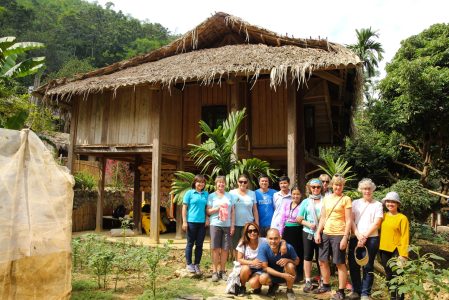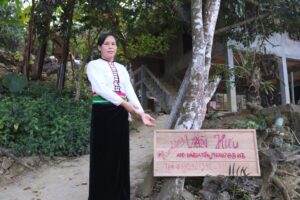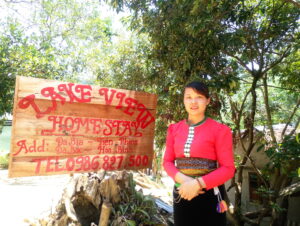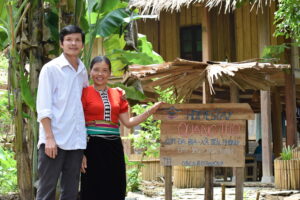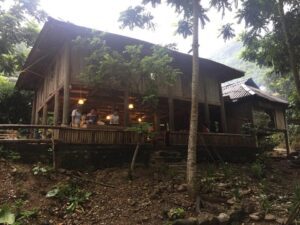SOME UNIQUE FEATURES AT THE DA BIA COMMUNITY TOURISM SITE
The stilt house
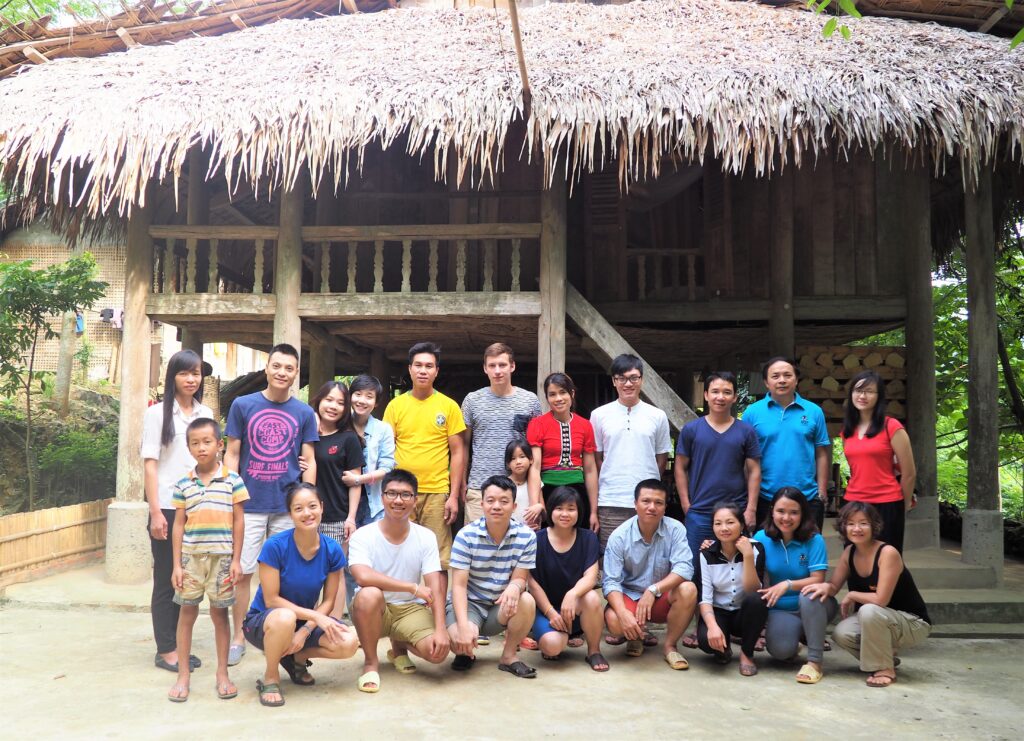
The uniqueness of stilt house architecture is a cultural heritage preserved by the Muong people. The Muong stilt house is modeled after the shape of a “turtle”, with 4 legs as 4 main pillars, the roof as the roof, the backbone as the ridge beam, and the turtle’s head as the cupboard door. This architectural style represents the longevity and cultural characteristics of the Muong people. It is because of this uniqueness that Da Bia hamlet always strives to encourage people in the hamlet to preserve the traditional stilt house style. The stilt houses are located close together without the need for walls or fences to separate them, creating a friendly space, connecting families together. Learning about the cultural activities taking place in the stilt house space will give visitors an opportunity to have extremely interesting experiences.
In Da Bia, there are ancient Stilt Houses. The stilt house is a common living space for the Muong people, so there are no private rooms, guests will be arranged in each room with curtains. Each person is equipped with 1 mattress, 1 pillow, 1 blanket, 1 mosquito net and 1 small bamboo lamp at the bedside.
Muong stilt house The house is usually divided into three floors: The top floor is the attic to store food and household items; the floor is the place to live and rest; and the floor below is used to store production tools and keep livestock and poultry. The basic material used by people to build stilt houses is wood, usually from the following types of wood: trai, cho chi, nghien, sen, tau, doi, de, dinh, lat… The house pillars are made of round or square wood, but commonly round; the base of the pillars is usually buried in the ground, but there are also places where large stones are used to support them (to avoid termites, to prevent rot and termites). In particular, any direction of the window is considered very sacred by the Muong people and it is taboo for women to sit on the window. In the subconscious and long-standing custom of the Muong people, windows are used to send relatives to the other world and will go this way.
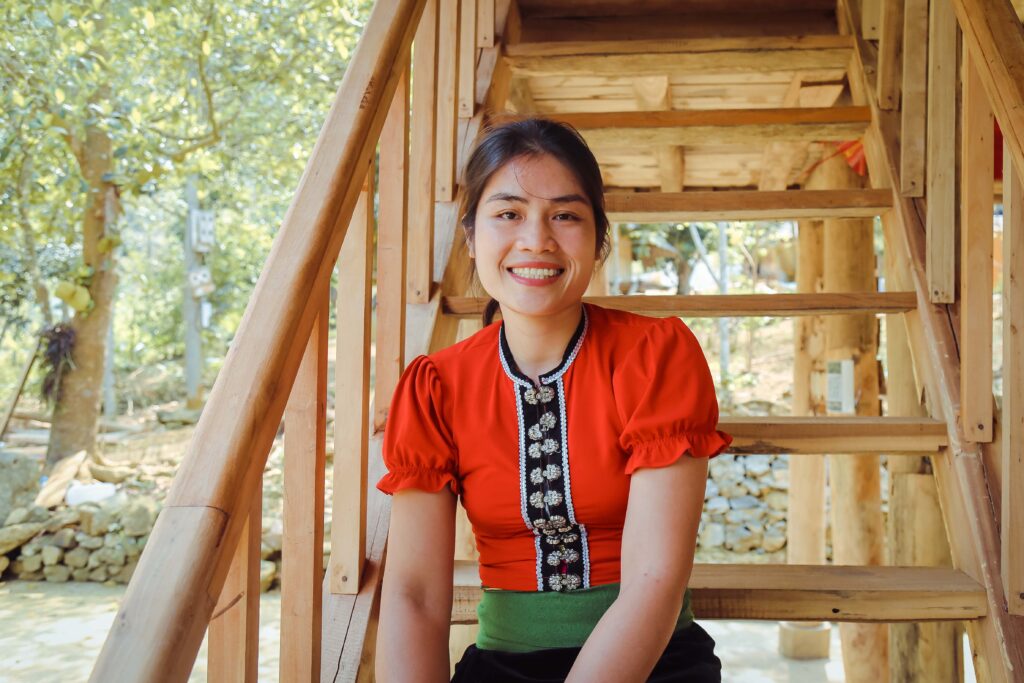
“Mạn” or also known as stairs is usually made of wood or whole round tree trunks and created on the steps of those tree spirits or can also be carved into a rectangle. The stairs are not built straight into the main door but built on the edge of a wooden hall and placed perpendicular to the roof beam of the house. In the Muong people’s house, the space is divided both vertically and horizontally. From the main stairs entering the middle of the stilt house is the kitchen below, the outside is for receiving guests, the inside is the living space of the whole family. In the house, vertically, above are windows called voong doors. Seats near the windows are reserved for the elderly, while below are reserved for the young. Horizontally, the outside is for men, the inside is for women.
The number of stairs in the stilt house must be odd and built on different land positions. Because according to the Muong people’s concept, odd numbers represent the rule of in-out-in, then wealth will not go out, the family will be warm, reunited, and children will be successful.

